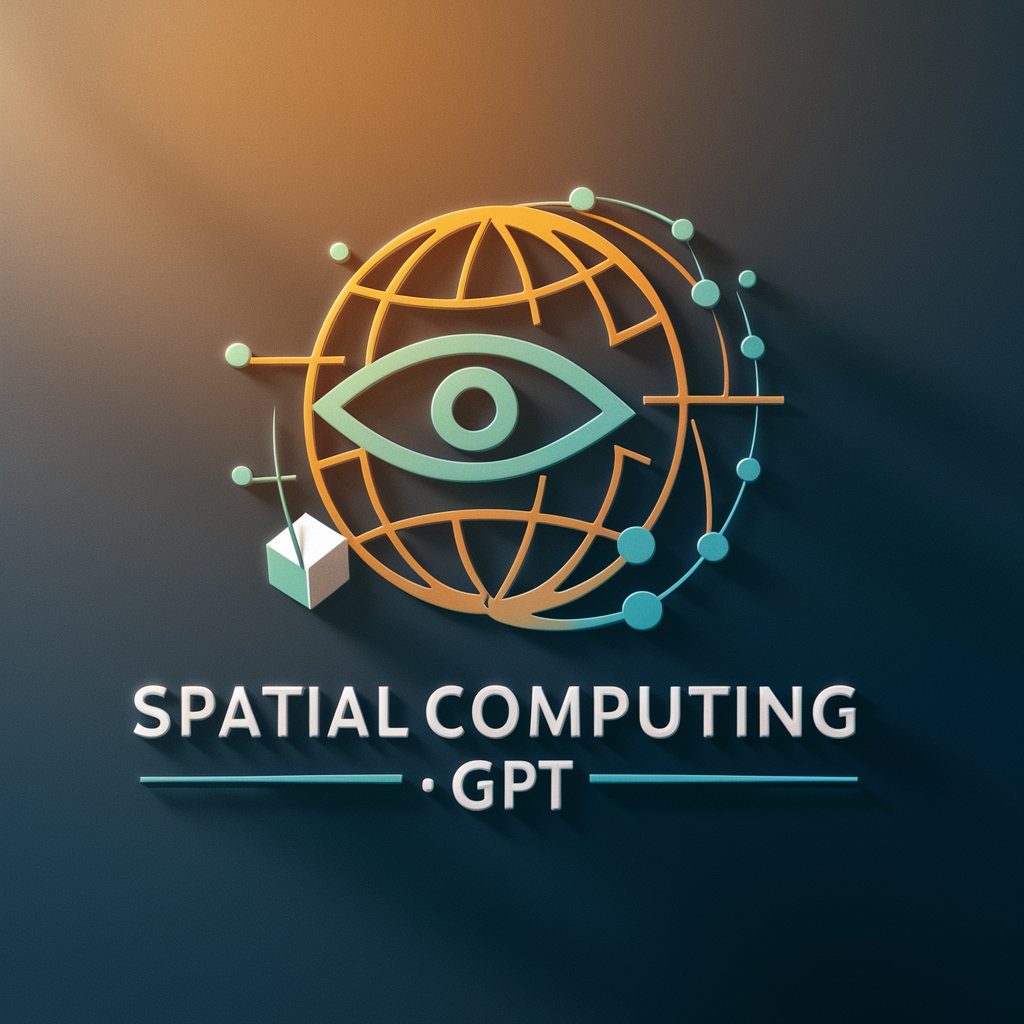
SPATIAL COMPUTING .AI - Spatial Data Analysis Tool

Welcome to Spatial Computing - GPT. Let's explore the future of spatial tech!
Unleashing the Power of Spatial Data
Can you explain how spatial computing integrates with augmented reality?
What are the latest advancements in 3D spatial recognition?
How can businesses leverage spatial computing for market analysis?
What are the key challenges in implementing spatial computing technologies?
Get Embed Code
Introduction to SPATIAL COMPUTING .AI
SPATIAL COMPUTING .AI is designed as an advanced, interactive platform focusing on the integration and application of spatial information with computing technologies. Its core purpose is to enable users to analyze, visualize, and interpret spatial data in various contexts, leveraging cutting-edge AI to enhance understanding and decision-making processes. Examples of its application include urban planning, where SPATIAL COMPUTING .AI can simulate and visualize city expansions, traffic flow, and infrastructure development, or environmental monitoring, where it helps in tracking changes in land use, vegetation cover, and climate variables over time. Powered by ChatGPT-4o。

Main Functions of SPATIAL COMPUTING .AI
Spatial Data Analysis
Example
Analyzing geographic patterns in urban development
Scenario
Urban planners use SPATIAL COMPUTING .AI to identify areas of rapid growth, predict future expansion, and plan infrastructure accordingly.
Visualization of Spatial Data
Example
Creating interactive 3D maps of geographical areas
Scenario
Environmental scientists utilize the platform to create detailed 3D visualizations of terrain and vegetation for ecological studies and conservation efforts.
Spatial Predictive Modeling
Example
Forecasting climate change impacts on specific regions
Scenario
Climate scientists employ SPATIAL COMPUTING .AI to model and predict the effects of climate change, such as sea-level rise and temperature fluctuations, on ecosystems and human settlements.
Indoor Mapping and Localization
Example
Developing navigation systems for large indoor spaces like malls and airports
Scenario
Developers use SPATIAL COMPUTING .AI for creating applications that assist users in navigating complex indoor spaces, enhancing user experience and safety.
Ideal Users of SPATIAL COMPUTING .AI Services
Urban Planners and Architects
Professionals involved in the planning and designing of urban spaces benefit from detailed spatial analyses and visualizations to make informed decisions regarding land use, infrastructure development, and environmental impact.
Environmental Scientists
Researchers and scientists studying environmental changes, conservation efforts, and ecological systems use SPATIAL COMPUTING .AI to visualize data, conduct spatial analyses, and model ecological impacts.
Public Safety and Emergency Response Teams
These groups utilize SPATIAL COMPUTING .AI for planning and real-time decision-making during emergencies, including natural disasters, by analyzing spatial data for evacuation planning, resource allocation, and hazard prediction.
Retail and Business Analysts
Analysts leverage SPATIAL COMPUTING .AI to study consumer behavior, optimize store locations, and analyze market trends based on geographical data, helping businesses strategize and improve their market presence.

How to Use SPATIAL COMPUTING .AI
1
Visit yeschat.ai for a free trial without the need for login, nor the requirement of ChatGPT Plus.
2
Choose your specific spatial computing needs from the provided categories, such as Geographic Information Systems (GIS), Spatial Data Management, or Virtual Reality.
3
Upload or input your spatial data. Ensure your data is formatted correctly according to the guidelines provided on the platform for optimal processing.
4
Utilize the available tools and functions for analyzing or visualizing your data. Take advantage of tutorials or help sections for complex operations.
5
Review and interpret the results. For projects requiring further analysis, consider iterating with modified parameters or exploring additional tools on the platform.
Try other advanced and practical GPTs
R Code Helper
Empowering R programming with AI

WordPress Plugin Coding Assistant
Streamline your plugin development with AI-powered assistance.

AI Educator
Empowering education with AI assistance

Araya Coder
Empowering your code with AI

당당라이프의 당뇨극복ai
Empowering diabetes management with AI

Sell Me This Pen
Elevate Your Brand with AI Creativity

AI Campaign Companion
Craft Epic Tales with AI-Powered Insight

Professional Python
Elevate your Python with AI-powered precision.

Главные инсайты потребительского поведения 2023
Navigate 2023 with AI-powered consumer insights

Undetectable AI: StealthGPT
Mimic human writing, bypass AI detection.

SovereignFool: EconomicsExpert
Unraveling Economics with AI Wisdom

SovereignFool: LanguageLuminary
Master languages with AI-powered insights.

Frequently Asked Questions about SPATIAL COMPUTING .AI
What is SPATIAL COMPUTING .AI?
SPATIAL COMPUTING .AI is a technology platform that combines spatial information with computing technologies to innovate in fields like GIS, Spatial Data Management Systems, and Virtual Reality, facilitating the analysis, visualization, and management of spatial data.
Who can benefit from using SPATIAL COMPUTING .AI?
Researchers, businesses, government agencies, and educators in fields such as environmental science, urban planning, logistics, and healthcare can greatly benefit from using SPATIAL COMPUTING .AI for spatial data analysis and decision-making.
What types of data can I analyze with SPATIAL COMPUTING .AI?
You can analyze a wide range of spatial data types, including GIS data, satellite imagery, indoor mapping data, and location-based services data, among others.
How does SPATIAL COMPUTING .AI handle data privacy and security?
SPATIAL COMPUTING .AI employs strict data privacy and security measures, including data encryption and access controls, to ensure user data is protected against unauthorized access and breaches.
Can SPATIAL COMPUTING .AI be integrated with other systems?
Yes, SPATIAL COMPUTING .AI offers integration capabilities with various systems and platforms, allowing for the seamless exchange and processing of spatial data across different applications.





